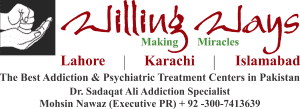Obsessive-Compulsive Disorder (OCD)
Obsessive-Compulsive Disorder (OCD) is a mental health condition marked by recurring obsessions and compulsions. Obsessions are unwanted, intrusive thoughts, images, or urges, while compulsions are repetitive behaviors performed to ease the anxiety triggered by these obsessions.
What is Obsessive-Compulsive Disorder?
People with OCD experience intrusive thoughts that lead to repetitive behaviors, often disrupting their daily lives. For instance:
- Someone might constantly fear their hands are dirty, prompting repeated handwashing even when it’s unnecessary.
- Another might repeatedly check if doors are locked, despite knowing they have already done so, causing significant delays and frustration.
OCD symptoms vary from repetitive cleaning to hoarding or intrusive thoughts, severely impacting a person’s quality of life.
Diagnostic Criteria for OCD
OCD symptoms often include:
- Excessive washing or grooming.
- Repeatedly checking (e.g., locks, appliances).
- Arranging items in specific ways.
- Performing tasks a set number of times.
- Hoarding items with little to no value.
These behaviors can consume hours daily, making it hard for a person to function effectively in day-to-day life.
The Link Between OCD and Addiction
OCD and addiction share similar patterns, where obsessive thoughts lead to compulsive actions. For example:
- A person with OCD might obsess over cleanliness and feel compelled to over-clean.
- Someone with an addiction, such as crystal meth use, might experience obsessive cravings, leading to compulsive substance use.
Both conditions influence behavior through overwhelming urges, and treating them together can lead to better outcomes. At Willing Ways, we address the overlap between OCD and addiction with an integrated care approach.
Causes and Risk Factors of OCD
The exact cause of OCD is unclear, but several factors contribute to its development:
- Genetics: Having a family history of OCD increases the risk.
- Brain Chemistry: Imbalances in serotonin or hormones like vasopressin may play a role.
- Brain Structure: Irregularities in the frontal lobes and basal ganglia are often linked to OCD symptoms.
- Environment: Stressful events or exposure to harmful substances can trigger OCD.
OCD typically begins in adolescence, with most cases developing before the age of 19. Onset after the age of 40 is rare.
Prevalence of OCD
Around 2% of the population lives with OCD, with symptoms that often interfere with relationships, careers, and everyday activities. Studies show that OCD frequently coexists with substance use disorders, which complicates treatment. For instance, research among veterans with OCD found that 36.7% also struggled with substance use, including alcohol, cannabis, and opioids.
Treatment for OCD
Although there isn’t a cure for OCD, it can be managed effectively with proper treatment:
- Cognitive Behavioral Therapy (CBT): This type of therapy helps individuals recognize and reduce obsessive thoughts and compulsive behaviors.
- Medication: Selective serotonin reuptake inhibitors (SSRIs) are commonly prescribed to improve serotonin levels and reduce symptoms.
At Willing Ways Lahore drug rehabilitation centers, specialized programs focus on providing holistic care for OCD and co-occurring conditions. Tailored strategies address the unique needs of each individual, ensuring they regain control over their lives.
Conclusion
Obsessive-Compulsive Disorder is a challenging condition that not only affects the person diagnosed but also impacts their loved ones. Understanding its causes, symptoms, and management options is vital for effective treatment. If you or someone you care about is struggling with OCD, reach out for professional assistance and start the path to recovery with expert guidance.

